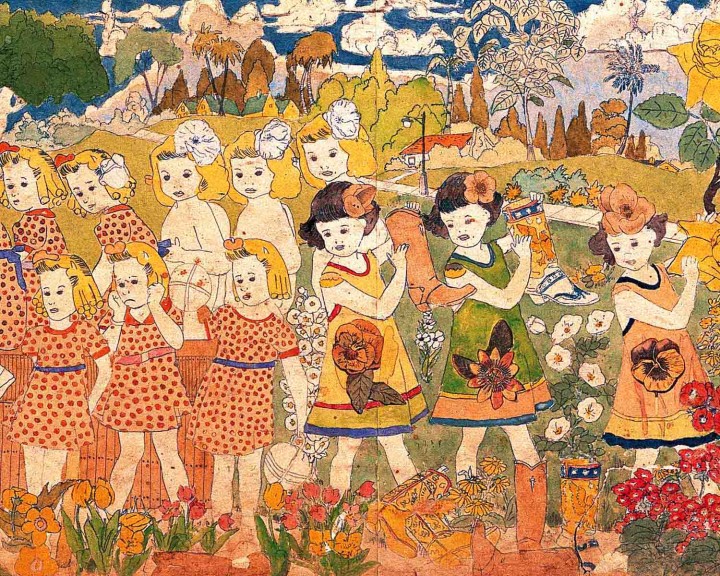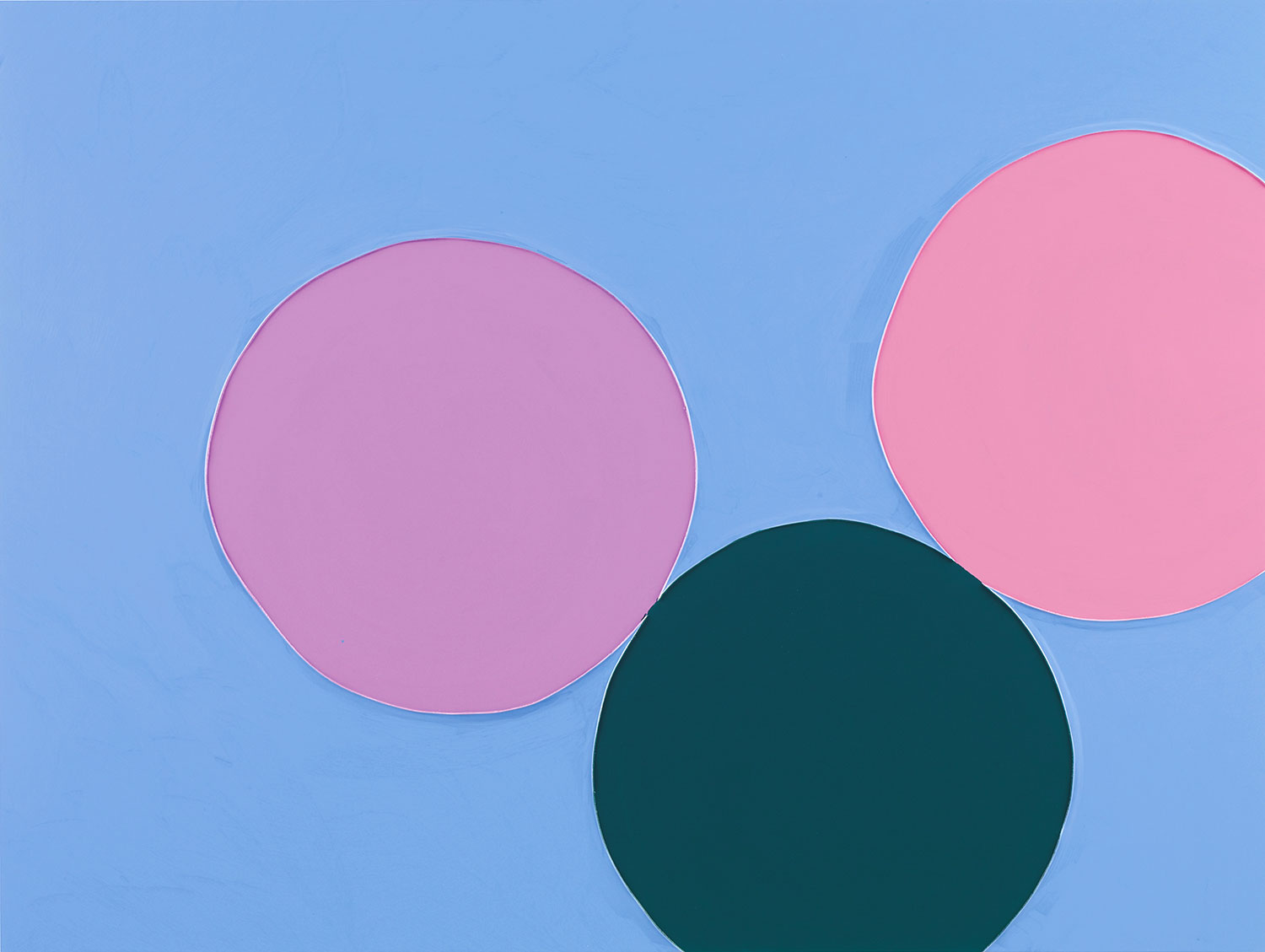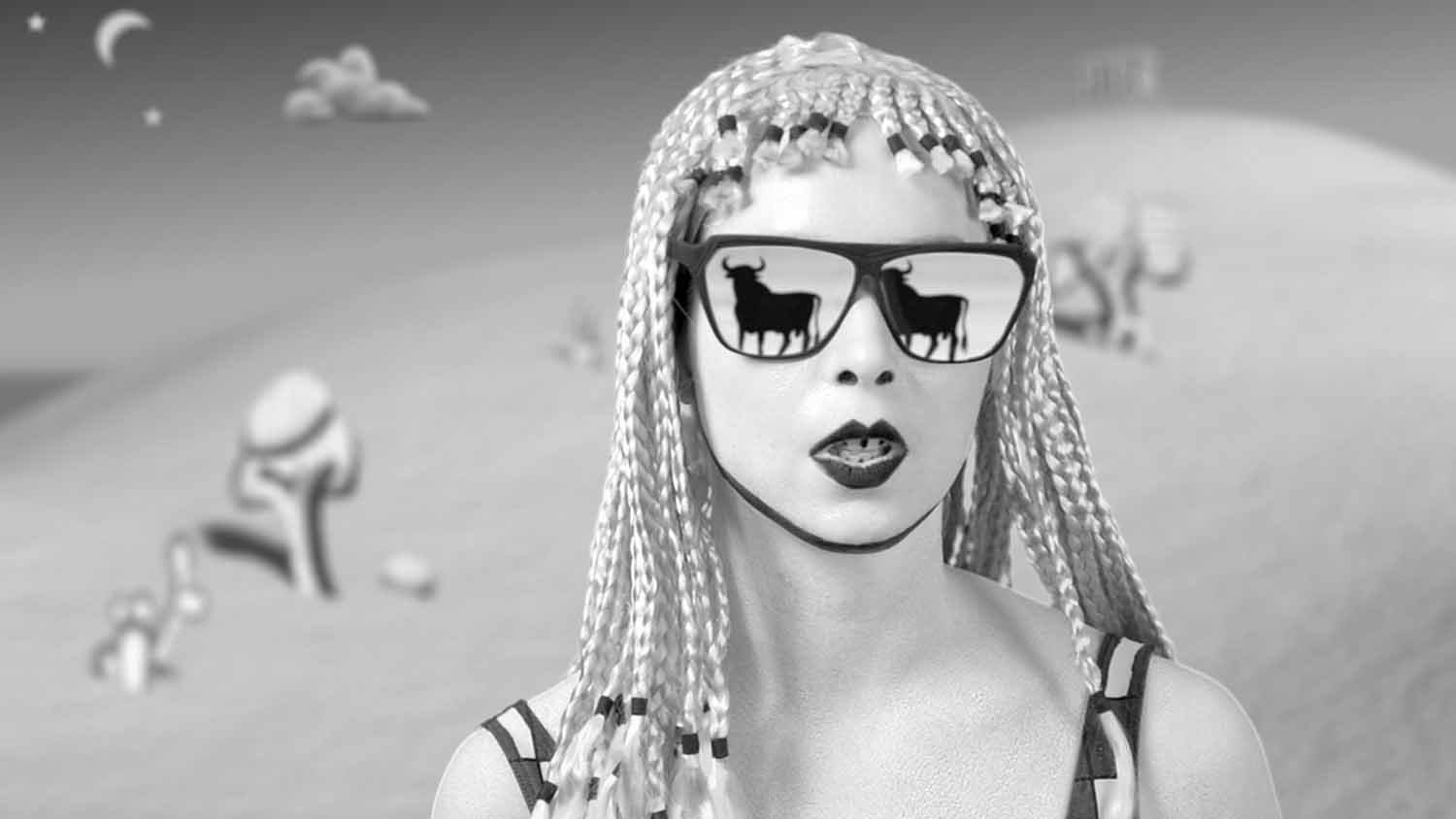What better soul to contemplate strange intersections of sex and gender, Catholic ideology and popular culture than an intensively creative yet orphaned and socially reclusive Believer? That is, someone with the kind of faith and compulsion to focus on strikingly hybrid formations of identity while also possessing an unusually determined bent for iterative bricolage?
Part of a series of exhibitions dedicated to different facets of a single artist’s singular output, “Betwixt and Between: Henry Darger’s Vivian Girls” focuses on the heroines of Darger’s epic image-and-text-based narrative, the result of decades of devotional creative practice undertaken in his Chicago apartment. The show, in tandem with an exhibition dedicated to aspects of Darger’s sources and texts, provides a series of juxtapositions and explanatory analyses of how he gathered and transmuted his imagery in pursuit of his exaltation of a particularly idiosyncratic blend of young femininity and gender ambiguity.
Posthumously celebrated as a quintessential “outsider” artist, Darger toiled in isolation to craft the elaborate and eccentric mythology of the “Vivian Girls.” Those girl-ish protagonists’ androgynous innocence, in Darger’s articulations, was always under threat and only barely maintained with a fierceness of purpose in battles that were often cross-cut with woozily sexualized displays. With their outlines traced on paper and clothing and backgrounds filled out with watercolor, the features of these figures tended toward the generic and/or caricatured facial expressions of the cartoon imagery they were borrowed from. Those expressions and bodily poses were part of the fleeting perceptions retained by Darger from advertisements, coloring books and other mass-market imagery produced for children, all dramatically repurposed for the telling of his ongoing war.
Given the pervasive recurrence of combat in the Vivian Girls’ sprawling story, the question arises: What was Darger himself fighting for? The idea of maintaining innocence is one possibility — especially amid the aggressive welter of popular culture and, more specifically, sexuality and gender roles. The differences Darger defended seem eerily prescient of the current moment’s greater public awareness of pansexual possibilities and efflorescence of transgender reorientations.



